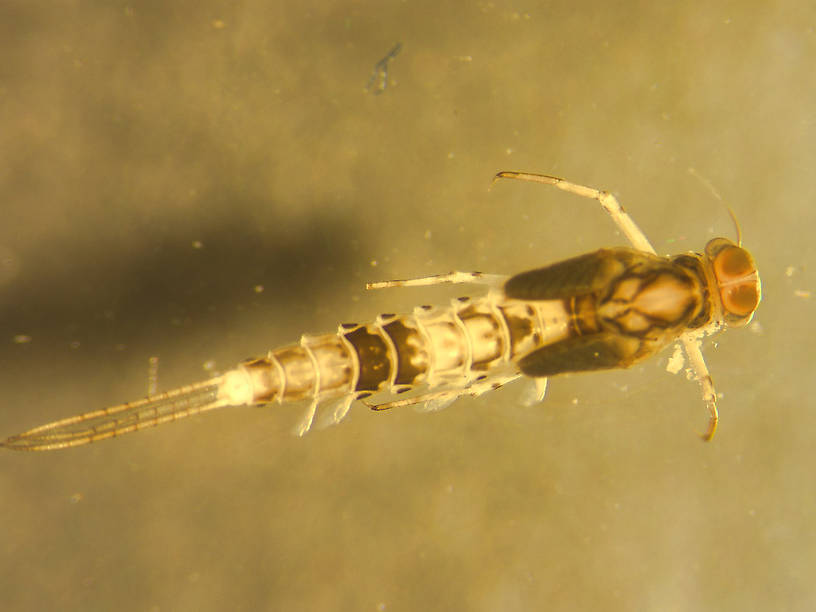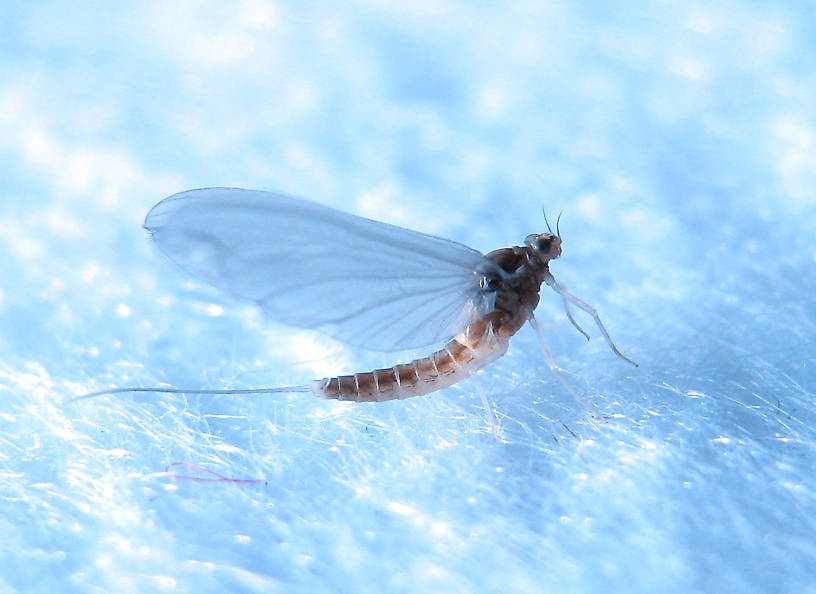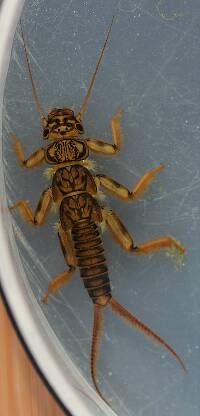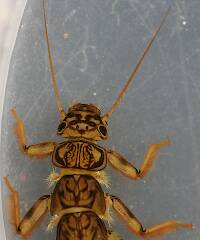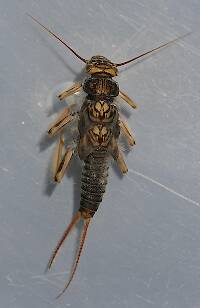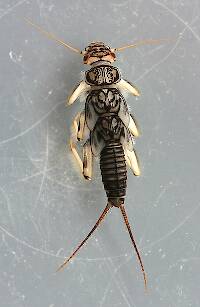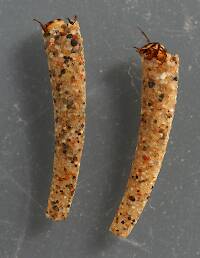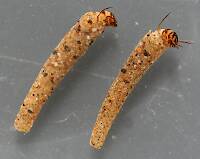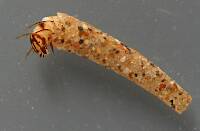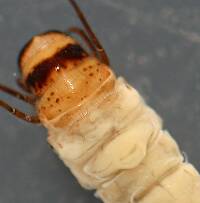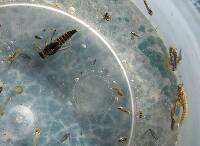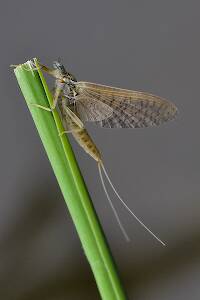
Blue-winged Olives
Baetis
Tiny Baetis mayflies are perhaps the most commonly encountered and imitated by anglers on all American trout streams due to their great abundance, widespread distribution, and trout-friendly emergence habits.
Featured on the forum

This one seems to lead to Couplet 35 of the Key to Genera of Perlodidae Nymphs and the genus Isoperla, but I'm skeptical that's correct based on the general look. I need to get it under the microscope to review several choices in the key, and it'll probably end up a different Perlodidae.

Troutnut is a project started in 2003 by salmonid ecologist Jason "Troutnut" Neuswanger to help anglers and
fly tyers unabashedly embrace the entomological side of the sport. Learn more about Troutnut or
support the project for an enhanced experience here.
This topic is about the Mayfly Genus Anafroptilum
These species were previously in Centroptilum, a genus no longer represented in North America.They are closely related to the important European "Spur Wings", a name given them due to the hook on the leading edge of their hind wings. These very small mayflies are usually reported in this country as inhabiting water too warm and/or stagnant for trout but this is not always the case. Significant numbers have been reported in many cold water environments throughout the West. These tiny sulphurish mayflies are easy to confuse with small Pale Morning Duns which is perhaps the reason for their under-reporting by anglers. Their having only two tails is the easiest to way to tell the difference.
From an angling perspective, a downside of many taxonomic advances is the loss of what was thought to be the ability to use easily identifiable morphological differences for determining between genera. This is especially problematic in sorting out baetids. The truth is the old rule used by anglers involving the hindwings (i.e., spurwing - prev. Centroptilum, no wing - prev. Pseudocloeon, the rest - Baetis) has been dubious for years. They can no longer be applied as more has been learned about new genera and species properly reassigned. It is now recognized that some species of Anafroptilum and Baetis lack hindwings altogether.
Example specimens
Entoman on Jan 29, 2011January 29th, 2011, 10:19 am EST
These are the little creamy guys that hatch profusely on Fall River (CA), causing VERY selective feeding midday at the end of June/early July below the public access. Common name locally is Tiny PMD's which is a misnomer as these are NOT ephemerellids but rather baetids. Their sulfur coloration is what causes the confusion. Fall river runs well under 60 degrees during the Summer so I have my doubts that this (these) genus (genera) is (are) exclusive to warm water. Ernest Schwiebert identifies them when fishing the Paradise Valley spring creeks of Montana with Joe Brooks in one of his books. Makes one wonder if the fairly common reports of PMD's sized 20 and under on our Western spring creeks aren't really talking about this tiny critter.
In England, their olivaceous and larger cousins go by the name "Spur Wing" in honor of the rear projecting spike off the leading edge of the hind wing. They are reported as important hatches. This spur used to be the easiest identifying characteristic separating species of Centroptilum from others in the Baetidae family. Though the generic name has not been done away with, many species of possible importance to fishermen have been scattered among several genera (at least for now) and new ones added where this unique wing feature is not shared, thus making stream side identification beyond the familial virtually impossible. The only thing that can be known for sure is that species that fit the above description used to be called Centroptilum, so my comments on this hatch are listed here.
In England, their olivaceous and larger cousins go by the name "Spur Wing" in honor of the rear projecting spike off the leading edge of the hind wing. They are reported as important hatches. This spur used to be the easiest identifying characteristic separating species of Centroptilum from others in the Baetidae family. Though the generic name has not been done away with, many species of possible importance to fishermen have been scattered among several genera (at least for now) and new ones added where this unique wing feature is not shared, thus making stream side identification beyond the familial virtually impossible. The only thing that can be known for sure is that species that fit the above description used to be called Centroptilum, so my comments on this hatch are listed here.
"It's not that I find fishing so important, it's just that I find all other endeavors of Man equally unimportant... And not nearly as much fun!" Robert Traver, Anatomy of a Fisherman
Quick Reply
Related Discussions
Topic
Replies
Last Reply
1
Jan 29, 2016
by Martinlf
by Martinlf
2
Jul 9, 2018
by Martinlf
by Martinlf


